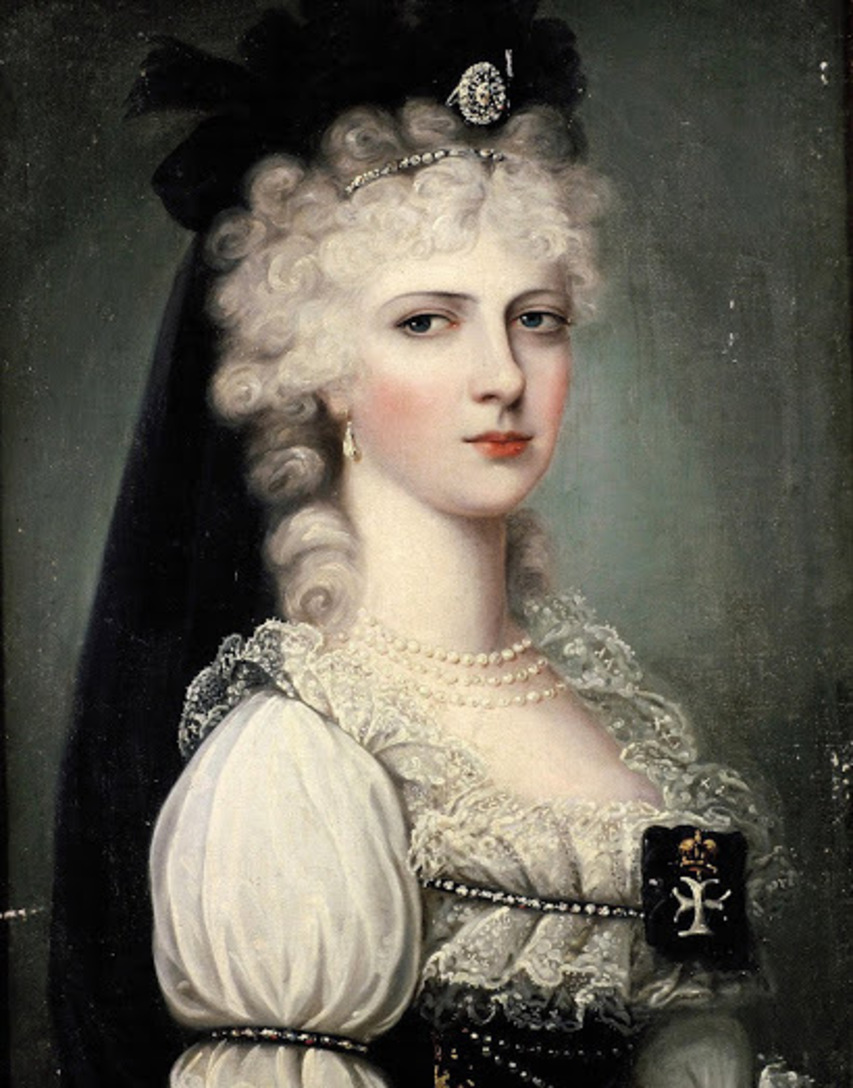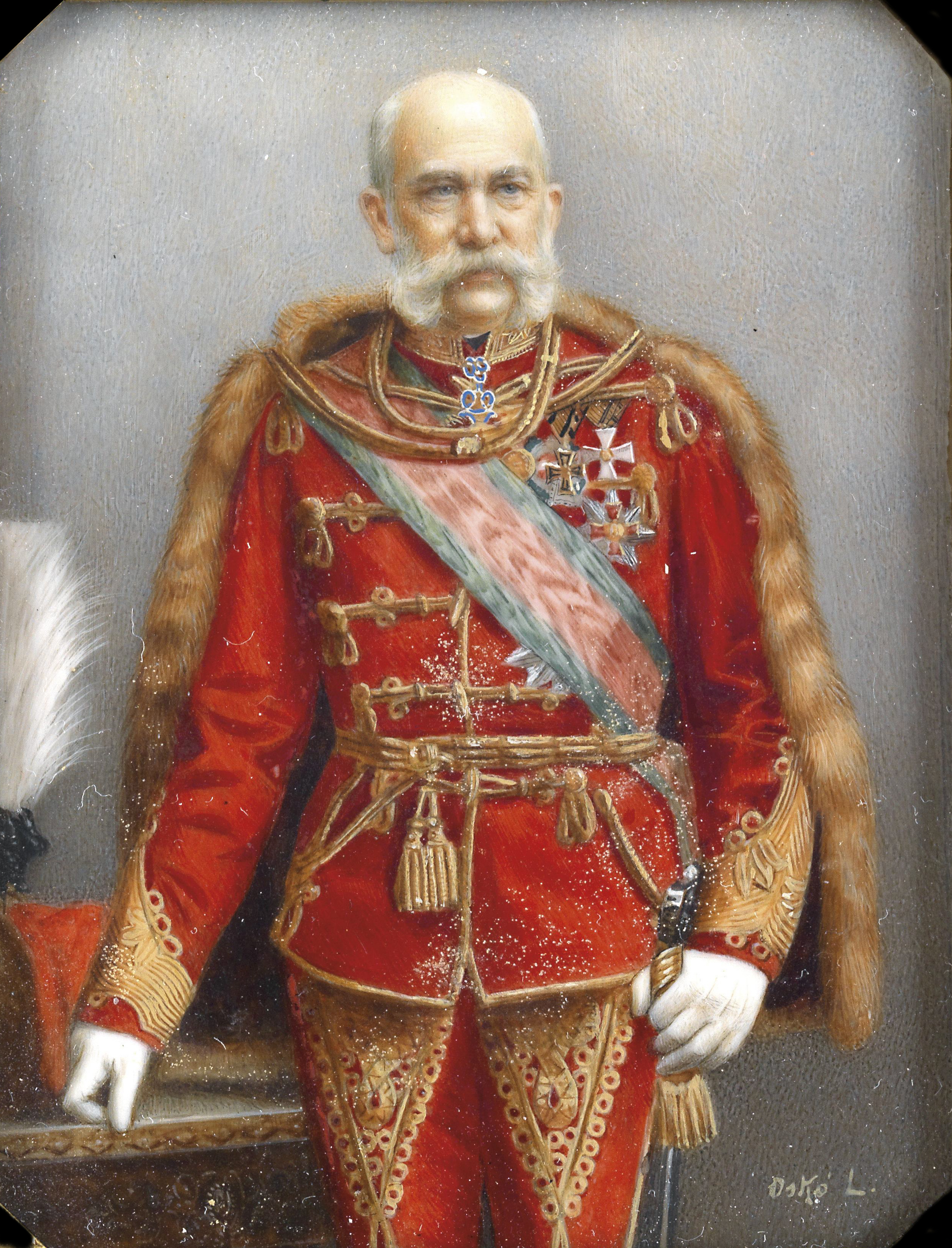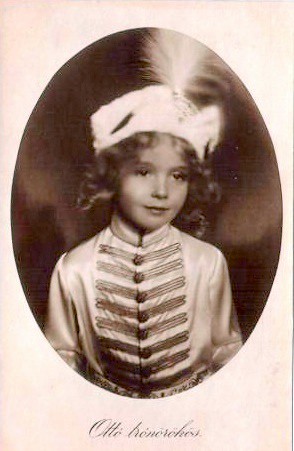Boudoir – Habsburgs in díszmagyar.1
Whenever
I come across a photo of a díszmagyar,
the Hungarian court dress, it counts as a special and happy occasion. It’s even
more special if that image happens to be showing someone from the House of Habsburg,
the royal family of Hungary. Sadly there are only a few of such photos exist –
it was mainly the Hungarian or Palatine branch of the Habsburg–Lorraine family that
wore díszmagyar. (Interesting fact:
while most Hungarians felt antipathy towards the Habsburg family or at least its
imperial branch, we did like the Hungarian branch.)
Fortunately
there were at least three occasions during the short lifetime of
Austria–Hungary when the members of the royal family could wear Hungarian court dress: the
coronation in 1867, the Millennium in 1896 and the coronation in 1916. The 1867
coronation portraits are probably the most famous: everyone knows the photo
showing Empress-Queen Elisabeth in her beautiful black-and-white court gown. However,
the other Habsburg ladies’ court dresses were less beautiful by no means. What
really disappoints me, though, is that it seems our royal princesses – the daughters
of Francis Joseph I – never wore a Hungarian court dress.
Since
there are so much things to write about,
I’m going to cover the topic in two parts. The first post features the “early” Habsburgs until the 1840s and the
imperial branch, while the second article will present the Palatine branch and
other interesting stuffs.
So
here are Habsburgs in díszmagyar!
King Francis I (1768–1835)
 |
| Source: Wikimeadia Commons |
King Francis I (the first ruler to hold the title of Emperor of Austria) in Hungarian semi-court dress. the garment shown is a Hussar-like attire of high-ranked Hungarian military officials – usually it was worn by the Supreme Commander (‘legfelsőbb hadúr’) of the Hungarian Royal Army (or later the Field Marshal of the Austro–Hungarian Army). It became the coronation attire of Hungarian kings: its variants were worn by Ferdinand V in 1836 on the occasion of his coronation, by Francis Joseph I in 1867 and by Charles IV in 1916. Red-green sashes formed part of the badges of the Order of St. Stephen of Hungary. Hungarian nobles either wore this kind of sash (if they were members of the Order) or silver-bordered red instead of the one-toned red or blue ones used in other European countries.
Queen Carolina Augusta, born Princess of Bavaria (1792–1873)
| Source: Wikimedia Commons |
Queen Carolina Augusta, fourth wife of King Francis depicted as the Queen of Hungary. She was crowned as Queen of Hungary in September 1825 in Pozsony (today: Bratislava). The crown she is wearing is the same as the one that was used to crown Empress-Queen Elisabeth and Empress-Queen Zita – though it does not belong to the Hungarian Crown Jewels. Hungarian queens were traditionally crowned by touching their right shoulder with the Holy Crown of St. Stephen.
Archduke Joseph, Palatine of Hungary
(1776–1847)
 |
| Source: Wikimeadia Commons |
Archduke
Joseph the aforementioned semi-court dress. The Palatine was the king’s “deputy”, and Palatine Joseph, as he is called in Hungary, was almost like a king. Due to his efforts to develop Hungary, he was really popular.
Archduchess Alexandra Pavlovna, born
Grand Duchess of Russia (1783–1801)
 |
| Source: Alexander Palace Forum |
A rare
piece, as at that time the Hungarian court dress was still in the period of
forming and taking its final shape. I read that the Grand Duchess wore a Hungarian
court dress on her wedding – this gesture immediately won the Hungarian hearts.
How sad that she died so young!
Archduchess Maria Dorothea, born
Princess of Württemberg (1797–1855)
 |
| Source: Wikimedia Commons |
Archduchess Maria Dorothea in court dress – on
the occasion of coronation of Ferdinand
V, I believe.
King Ferdinand V (1793–1875)
 |
| Source: Wikimedia Commons |
Queen Maria Anna, born
Princess of Savoy (1803–1884)
 |
| Source: Wikimedia Commons |
The 1836 coronation ceremonies were again held in Pozsony. You can see how much the court dress changed since the 1800s.
The apron, constituting an inseparable part of the attire, is also visible on
the painting.
Archduke Stephen,
Palatine of Hungary (1817–1867)
Though there are portraits of the Archduke in Hungarian
military-court uniform, here he is shown in a full Hungarian male court dress.
This kind of long, scarf-like tie is typical of semi-formal Hungarian court
dresses, the kismagyars. The ties are
not necessarily worn with a full díszmagyar
– in fact, they rather belong to kismagyar.
There is a special Hungarian phrase for the way he’s wearing his dolman – only
on one of his shoulders, hold by a metal strap: ‘panyókára vet’.
King Francis Joseph I
(1830–1916)
 |
| Source: Alexander Palace Forum |
 |
| Source: Wikimedia Commons |
In the Hungarian semi-court uniform. On the left: the King on the
occasion of his coronation; on the right: on the occasion of the 1896 Millennium. Interesting, that I’ve never seen a photo showing the King wearing the Holy Crown – there are some illustrations, mostly lithographs, but no photographies.
Queen Elisabeth, born Duchess
in Bavaria (1837–1898)
Since most people are familiar with the
coronation portrait of the Empress, I decided to chose a lesser known portrait
which was made around the time the royal couple’s first visit to Hungary. The
young Queen wore a pink court dress presented to her by her mother-in-law,
Archduchess Sophie. (It’s a common belief that the Archduchess disliked the
Hungarians, but if she really did gift her daughter-in-law with a Hungarian costume,
maybe she wasn’t that antagonistic towards us.)
 |
| Source: Pinterest. |
And another image showing the Queen in court
dress, this time in 1896, during the Millennium celebrations. She wore black as
she was mourning the Archduke Rudolph’s death. Also notice the long sleeves which are quite unusual for a Hungarian court dress.
Archduke Louis Victor (1858–1889)
Archduke Louis Victor, younger brother of Emperor-King Francis Joseph I in semi-court uniform. Because of his scandals, the Archduke was exiled to Klessheim near Salzburg. He was, however, allowed to join the delegation representing the Monarchy in the coronation of Tsar Nicholas II of Russia.
Archduke Louis Victor (1858–1889)
 |
| Source: Wikimedia Commons. |
Crown Prince and
Archduke Rudolph (1858–1889)
 |
| Source: Wikimedia Commons. |
The Crown Prince of Austria–Hungary in the
traditional semi-court dress uniform. Crown Prince Rudolph, like his mother,
was popular among Hungarians – Rezső királyfi
(‘Prince Rezső’, a Magyarised version of Rudolph), that’s how he was called.
Crown Princess Stephanie, born Princess of Belgium (1864–1945)
 |
| Source: Wikimedia Commons. |
King Charles IV (1887–1922)
1916, coronation portrait. Like the previous kings of Hungary, Charles IV also wore the uniform of the “Main/First Warlord of
Hungary”.
Queen Zita, born Princess
of Parma (1892–1989)
Queen Zita in 1916 – the last time a Hungarian
queen wore a court dress. Unlike her predecessor’s gown, hers was white with
gold embroidery. I cannot decide which one is more regal. And on her head the traditional crown of the Habsburg consorts.
Crown Prince and Archduke Otto (1912–2011)
 |
| Source: Flickr |
1916,
coronation. I simply love him in this
suit. He’s wearing a white atilla
with golden military frogging. Worn under a golden, ermine fur mantle, the
costume was designed to resemble the attire of princes in Hungarian fairy
tales.
 |
| Source: MTI |
And
again Archduke Otto, this time a little older – and no longer the Crown Prince
of Austria–Hungary. Much to my regret, nor the Archduke, neither Princess Regina
wore Hungarian court dress when they married (however, at her wedding to
Archduke Charles, Baroness Francesca Thyssen-Bornemisza did wear gown reminding
me of a court dress...)
This
was the first part – thank you for reading! And to be continued...
Alla





Arról, hogy miért nem láthattál Ferenc Józsefről koronás fényképet: Általában a koronát akkor látta a király az életében, amikor a koronázáskor a fejére rakták, és többet sem. Fotó meg gondolom azért nem maradt fenn, mert 1867-ben ez még elég gyerekcipőben járt, utána meg már nem volt használatos semmilyen más alkalmakkor.
ReplyDelete